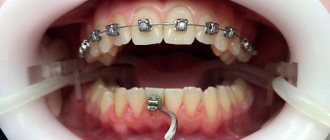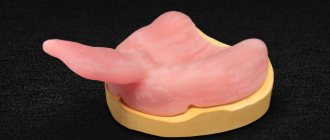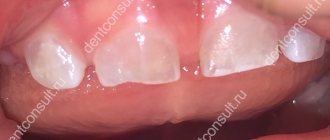In this article you will learn:
- types of dental prosthetics,
- which prosthesis is better for large absence of teeth,
- prices for dental prosthetics – for 2022.
Dental prosthetics is a branch of dentistry that deals with the restoration of damaged or missing teeth, the goal being to restore not only their appearance (their shape and aesthetics), but also their chewing efficiency. Dental prosthetics can be removable or non-removable. Fixed dental prosthetics are most often carried out with artificial crowns or bridges, which are fixed either to abutment teeth ground for crowns, or to dental implants.
Prosthetics in the absence of teeth or in the absence of a large number of them are most often removable. This means you can take your dentures out for cleaning and then put them back in again. However, now there are methods of prosthetics on implants, which, even if there are no teeth on the jaw, will allow you to get a completely permanent bridge prosthesis within 2-3 days after the operation. In this case, we are talking about the basal implantation technique, as well as implantation according to the All-on-4 protocol.
Example of dental prosthetics: before and after photos
Below we will analyze in detail fixed and removable dental prosthetics - types and prices in Moscow for each type of denture. Moreover, if you feel the need to insert teeth, you should always choose a non-removable prosthetic option, if possible, because no matter how good a removable denture is, it can fall off during conversation and when chewing, and the process of chewing food itself will not be very comfortable.
Moreover, in addition to traditional dental implantation, which allows you to obtain a fixed prosthesis even in the absence of teeth, there are also so-called mini-implants that are installed under a removable prosthesis to improve its fixation. Those. the prosthesis will still be removable, but it will be possible to remove it from the jaw only by applying significant force. The cost of dental prosthetics with a removable denture (on 4 mini-implants) is much cheaper than basal implantation or the All-on-4 technique, and will be only about 110,000 rubles.
Review of modern technologies that allow you to insert teeth
Just 30 years ago, there was only one way to replace lost teeth—prosthetics, and patients were offered crowns made of heavy and unesthetic materials—various metal alloys. And no one was embarrassed by the sight of metal teeth in the smile area. Nowadays, you can insert teeth in such a way that no stranger will even guess that you have a crown or prosthesis in your mouth, and not your natural teeth - to do this, just choose crowns made of metal-ceramics, ceramics or zirconium dioxide.
Teeth can be replaced using dentures or implantation. Both technologies are universal and applicable both for single restorations (in the absence of 1-4 teeth) and for completely toothless jaws.
It is important to understand that implantation does not exclude the stage of prosthetics, however, the crown in this case is not placed on the supporting tooth, but on the abutment of the implant implanted into the jaw bone.
How can you insert teeth in your case? The answer to this question will depend on how many teeth you are missing:
1. If you have teeth, but are severely damaged, you may be offered prosthetic crowns or immediate implantation.
2. If only one tooth is missing in a row, it can be inserted either by installing a denture (bridge) or by implantation. The latter method will be preferable, as it will allow the tooth to be inserted without affecting healthy teeth. The implanted implant will serve as a support for the crown.
3. If a large number of teeth, or even all teeth, are missing in the rows, they can be inserted using removable dentures or dentures on implants.
IMPORTANT: On the Internet you can find many reviews from people who decided to have teeth inserted and subsequently encountered various complications - from pain to prosthesis breakage or implant rejection. There is only one reason for such reviews - poor quality treatment. Therefore, if you decide to have teeth inserted, do not be lazy to spend time carefully choosing the clinic where you will have your teeth inserted.
Both during prosthetics and implantation, you may be offered to insert teeth with different types of dentures and crowns. Let's look at the features, pros and cons of all possible options.
Vampire smile: how and why they grow fangs today, what risks are associated with the procedure
Modern dentistry has a whole arsenal of techniques and technologies that make it possible to restore the integrity of damaged teeth and the appearance of a smile in a wide variety of clinical cases. But there are other situations when modeling the shape of individual teeth has nothing to do with violations of their integrity. Today we will talk about canine extensions, which are most often carried out with the goal of adding a “zest” to your smile and your image as a whole. Why do people do this, what methods are used to make vampire fangs today, and whether they are so harmless - read further in our article.
Insert teeth with metal-ceramic crowns
You can inexpensively replace teeth with metal-ceramic crowns. Such dental prostheses have a metal base and are covered with a layer of ceramic mass on top. This is done so that the finished crown has a natural and aesthetic appearance.
Metal-ceramic crowns are used in both traditional prosthetics and implantation, however, if you need to insert a front tooth, this option of dentures is not suitable. The fact is that the metal from which the base of the crown is made oxidizes over time and this reaction can cause the gums to appear blue in the area where the crown is installed. This cyanosis will be clearly visible when smiling or talking, which of course will affect the level of aesthetics.
If you want to see what a smile will look like if you replace your teeth with metal-ceramic crowns, look at the photos we publish below.
Are there any reasonable indications for the procedure?
This procedure is most often performed for aesthetic purposes, but dental experts also identify several compelling indications for its implementation. Thus, such a modification may be useful if there are problems with the appearance of the enamel, pigment spots, damage to the teeth, if most of the tissues have been damaged by caries or have chipped off as a result of injury.
“Six months ago I grew my fangs. I’ve been dreaming about it for a long time, back when vampire sagas were just gaining popularity. And not so long ago I learned that this can be done in dentistry. I paid only 10 thousand for this beauty. I just had my teeth grown; I didn’t get any veneers, much less crowns. I'm still very happy with the result! The main thing is not to overdo it with the length.”
Olchik92, Moscow
However, such restoration has more limitations than indications. Therefore, before you decide to get vampire fangs, you need to consult a dentist and undergo an appropriate examination.
Before the procedure, you should definitely consult a specialist.
Insert ceramic teeth
Inserting ceramic teeth will be the right decision if you need to restore your front teeth, which are clearly visible when communicating with people around you. But for the restoration of chewing teeth, ceramic crowns are not suitable: ceramics is a fairly fragile material and a crown made from it may not withstand the heavy load that is constantly placed on the chewing teeth when chewing food.
The high aesthetics of ceramic crowns determines the expensive prices for this type of orthopedic structures. But the patient gets a beautiful and natural smile: you can also evaluate the results of dental restoration with ceramic crowns from the photos that we have posted below. Ceramic crowns can be placed on both the abutment tooth and the implant.
What are the pros and cons?
Most often, fangs are extended at will, to create an unusual image. This modification has both certain advantages and significant disadvantages.
| Advantages | Flaws |
|
|
How to insert a tooth if there is no root?
If you have had a tooth removed, you can insert it using implantation, and this can be done immediately after the extraction procedure - using the method of one-step implantation. With this method of tooth restoration, implants are implanted directly into the socket of the extracted tooth and then a temporary prosthesis is placed on them. Simultaneous implantation will allow you to insert a tooth and not walk with an unpleasant dentition defect. The doctor will install a permanent crown on the implant abutment after it has fused with the bone - this usually takes 3-4 months.
Implantation is recognized as the most reliable and durable way to restore extracted and lost teeth, but it is not always possible to replace teeth with it - there is a fairly wide range of contraindications for this surgical operation.
Why do they grow fangs?
An adult has 4 fangs in his mouth - 2 on the upper jaw and 2 more on the lower jaw. These are the third elements from the central line that close the group of frontal teeth. Usually they do not differ much in length from their “neighbors”. However, recently, more and more often, teenagers and young people, passionate about mysticism and the theme of vampirism, want to lengthen their fangs in order to make their image original and their smile unusual or even frightening. Today this desire can be fulfilled by a dentist.
Most often, this is done using the direct method, but there are other methods. The maximum permissible length of the modified canine should be no more than 4 mm1. If the tooth is longer than this norm, it can create some discomfort and increase the risk of injury to the mucous membrane.
The vampire smile is increasingly in demand among teenagers
How are dental implants inserted?
Implantation, in order to insert teeth, can be carried out in different ways: according to a one-stage or two-stage protocol. But its essence will always boil down to the following: in order to insert a lost tooth, the doctor will implant a special structure in the patient’s jaw - an implant, on which he will subsequently install a crown or prosthesis.
Until the stage of permanent prosthetics, you will walk with a temporary prosthesis, which is placed during one-stage implantation immediately after implantation. In two-stage implantation, immediate dentures are used to mask dentition defects.
A permanent crown or prosthesis is placed on the implant only after it has completely fused with the natural bone tissue of the jaw. Crowns for installation on an implant can be made from any material: for the restoration of front teeth, ceramic crowns are most often used, for the restoration of chewing units - products made of zirconium and metal-ceramics.
Which implantation technology should I choose to insert teeth? It is impossible to give any absentee recommendations on this matter. You need to visit the clinic, undergo an examination and diagnosis, and only after that the implantologist will offer you the optimal implantation method.
Is bone augmentation necessary?
One of the limitations to the installation of implants is the lack of bone tissue volume or its atrophy. It occurs as a result of a long toothless period, and bone loss begins almost immediately after the loss of a tooth by the root. The solution is to increase bone volume (osteoplasty in the lower jaw, sinus lift in the upper jaw) or protocols that allow implantation without bone grafting.
- With classical two-stage implantation, bone tissue augmentation in case of its deficiency is mandatory. For moderate and severe atrophy, osteoplasty is performed in a separate stage. Implants are installed after implantation of the osteoplastic material (after 2-3 months). If there is a slight loss of bone, replanting of osteoplastic material is possible simultaneously with the implantation of an artificial root.
- When installing one-stage implants, increasing bone volume in a separate stage is performed only in conditions of critical deficiency. In case of moderate atrophy - simultaneously with the installation of an artificial root; in case of slight recession, bone growth can be avoided by installing titanium roots at an angle in an area with sufficient volume and density of bone tissue.
One-stage protocols use implants that are attached to the cancellous bone and deeper basal layers that are not subject to atrophic processes.
If you need to insert a tooth after it has been removed
The best solution to insert one tooth is a one-time implantation, but a tooth can only be inserted if too much time has not passed since its removal. To firmly fix the implant in the bone, the jaw bone tissue must be dense and have a certain height. But the longer a tooth is missing, the more the bone thins and dries out. Therefore, if you had a tooth removed several years ago, you can have it replaced either with prosthetics or classical implantation.
Advantages of visiting Medikastom clinics
- A full range of services in the field of prosthetics. After removal, specialists can carry out both one-stage and any other interventions. Additionally, before prosthetics, a detailed general and dental examination will be carried out. Specialists will create a 3D computer model of implantation and develop a plan for its implementation. The doctor will coordinate all actions with you.
- Experienced specialists. All dental work is carried out by highly qualified doctors. Our employees are masters of their craft. They will quickly cope with both tooth extraction and other procedures. Doctors have hundreds of successfully performed implantations behind them.
- High standards of medical care. Specialists follow all safety protocols when treating and restoring teeth. In addition, doctors successfully implement modern techniques and advanced technologies.
- Patient-friendly service. You can make an appointment at any time convenient for you. We have no queues, and you can watch movies during the procedures.
- Convenient location of clinics. You can quickly reach any of them either by your own car or by public transport.
We will help you create a financial plan for dental restoration so that restoration optimally fits into your budget.
If you are interested in prosthetics after tooth extraction, make an appointment by calling +7 (499) 283-71-58.
Our 24-hour dentistry provides the widest range of services. We are always ready to provide you with services such as sinus lifting and bite correction with braces.
How much does it cost to get teeth inserted?
Teeth can be inserted in different ways and using different crowns or dentures, so the price of the service can be very different. Below we publish prices for services for restoring damaged or lost teeth, which are offered by our dental clinic in Moscow - “Aesthetica”!
If you want to insert teeth so that the restoration result is both beautiful and high-quality, come to our dentistry! We have created all the conditions for high-quality, painless dental restoration in the most difficult cases!
Prices for services
Consultation with a dentist - orthopedist Free Stump tab from RUB 3,900. up to 9500 rub. Ceramic inlay from 8200 rub. up to 17,500 rubles. Metal-ceramic crown CoCr from 7,200 rubles. up to 10,000 rubles. Metal-free ceramics 25,000 rubles. Ceramic veneers from 17,000 rubles. up to 30,000 rubles. Removable prosthesis 9,500 rubles. up to 18,000 rubles Clasp clasp prosthesis from 25,000 rubles up to 28,000 rubles Clasp monomer-free prosthesis 36,000 rubles Nylon prosthesis 15,000 rubles up to 34,000 rubles; metal ceramics for implants from 20,000 rubles. up to 25,000 rub.What determines the cost of prosthetics?
Prices for installing dentures and artificial crowns depend not only on the cost of the structures, but also on the following indicators:
- Type of medical institution – public or private.
- The level of material equipment in dentistry and the availability of experienced, highly qualified personnel.
- The type of material used to make an implant or crown.
- Manufacturer of the product or material for its manufacture - domestic or foreign.
- Additional costs due to the need for preliminary treatment of oral diseases.
- The cost of the dentist and dental technician to prepare, manufacture and install a crown, implant or bridge.
Prices for crowns, implants, bridges and other types of prostheses can vary greatly in different clinics. You can only find out how much it costs to insert one tooth from your attending physician. Since the websites of dental clinics most often indicate price ranges or their minimum values.










